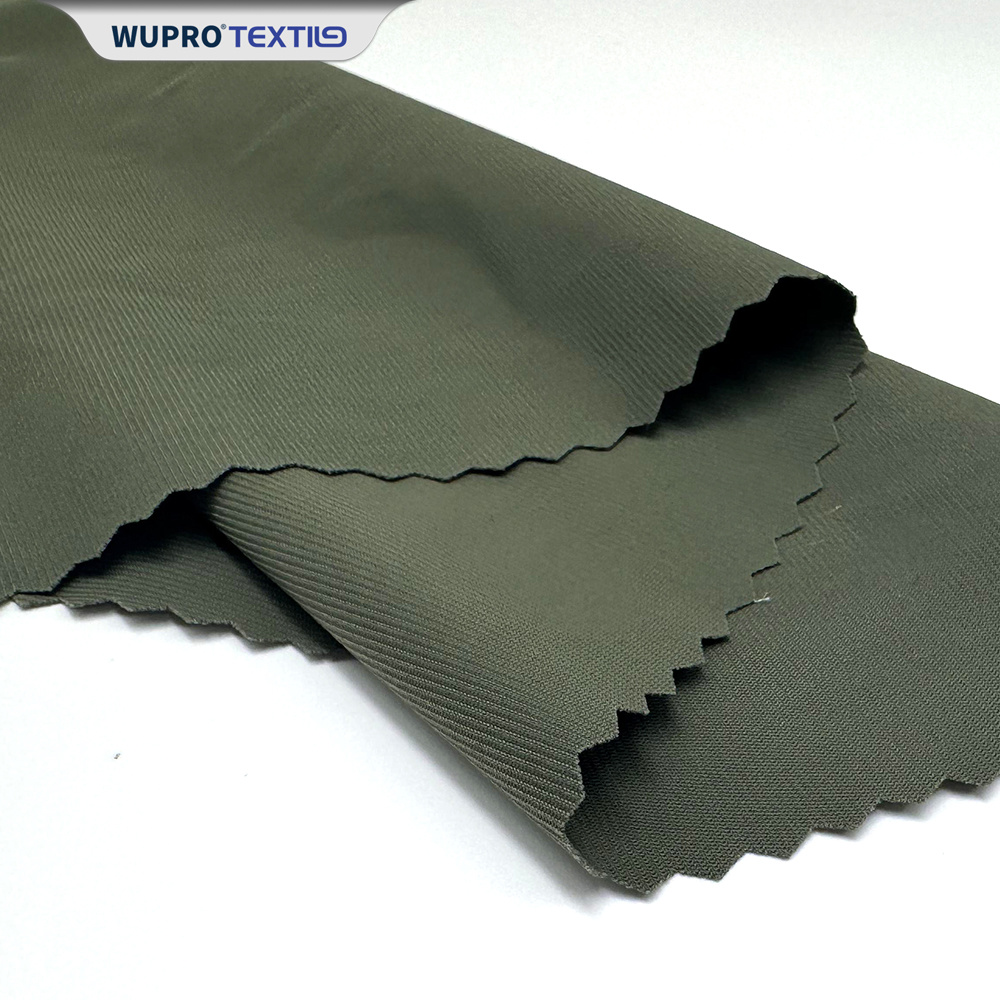Why Antimicrobial Fabrics Are Essential for Healthcare Settings
Why Antimicrobial Fabrics Are Essential for Healthcare Settings
1. Introduction to Antimicrobial Fabrics
Antimicrobial fabrics are engineered textiles that resist the growth of microorganisms, such as bacteria, fungi, and viruses. In healthcare settings, these materials play a pivotal role in infection control and patient safety. By incorporating antimicrobial properties into fabrics, we can sig
Jun 18,2025

Why Antimicrobial Fabrics Are Essential for Healthcare Settings
1. Introduction to Antimicrobial Fabrics
Antimicrobial fabrics are engineered textiles that resist the growth of microorganisms, such as bacteria, fungi, and viruses. In healthcare settings, these materials play a pivotal role in infection control and patient safety. By incorporating antimicrobial properties into fabrics, we can significantly reduce the risk of hospital-acquired infections (HAIs), which affect millions of patients globally each year. This article explores the various aspects of antimicrobial fabrics, their importance in healthcare, and how they contribute to better patient outcomes.
2. Understanding Hospital-Acquired Infections (HAIs)
Hospital-acquired infections, or HAIs, are infections that patients acquire while receiving treatment for other conditions within a healthcare facility. These infections can lead to severe complications and can often be life-threatening. Key statistics emphasize the urgency of addressing HAIs:
- Approximately 1 in 31 hospital patients has at least one HAI.
- HAIs account for an estimated 99,000 deaths each year in the United States alone.
The significance of preventing HAIs cannot be overstated. This is where antimicrobial fabrics come into play, offering a proactive approach to controlling infection spread.
2.1 Common Types of HAIs
Understanding the common types of HAIs can help in recognizing the importance of antimicrobial fabrics:
- **Catheter-associated urinary tract infections (CAUTIs)**: Usually caused by bacteria, these infections often stem from the use of urinary catheters.
- **Surgical site infections (SSIs)**: Occurring in the area of surgery, these infections can arise from bacteria present on the skin or in the operating room environment.
- **Ventilator-associated pneumonia (VAP)**: This infection occurs in patients who are on ventilators and can be caused by pathogens present in the healthcare setting.
By using antimicrobial fabrics in various applications, we can help reduce the occurrence of these infections.
3. The Science Behind Antimicrobial Fabrics
Antimicrobial fabrics are treated with agents that inhibit the growth of bacteria and other microorganisms. These treatments can be either built into the fabric during manufacturing or applied as a finishing process. The most commonly used antimicrobial agents include:
- **Silver ions**: Known for their broad-spectrum antimicrobial properties, silver ions disrupt the cellular processes of bacteria.
- **Zinc oxide**: This agent prevents bacteria from multiplying and can also offer UV protection.
- **Copper**: Exhibiting natural antimicrobial properties, copper is effective against a wide range of pathogens.
By understanding the science behind these treatments, healthcare facilities can make informed decisions about which fabrics to use in patient care environments.
3.1 How Antimicrobial Fabrics Work
Antimicrobial fabrics work through various mechanisms that prevent microbial growth. The most common methods include:
- **Contact killing**: Microorganisms come into contact with the fabric and are killed on the surface.
- **Inhibition of reproduction**: The fabric's treatment slows down or stops the replication of bacteria, reducing their overall numbers.
- **Release of antimicrobial agents**: Some fabrics are designed to release antimicrobial agents gradually, maintaining effective protection over time.
These mechanisms contribute to a safer healthcare environment, reducing the potential for infection.
4. Importance of Antimicrobial Fabrics in Healthcare
The significance of antimicrobial fabrics in healthcare settings cannot be overstated. They provide essential benefits, including:
- **Infection Control**: Antimicrobial fabrics help minimize the risk of HAIs, leading to improved patient safety and outcomes.
- **Enhanced Comfort**: Fabrics that resist bacteria are often softer and more breathable, enhancing patient comfort during their stay.
- **Durability and Longevity**: Antimicrobial treatments can extend the lifespan of fabrics, reducing the need for frequent replacements.
Incorporating these fabrics into healthcare environments ensures that facilities can provide a higher standard of care.
4.1 Application Areas of Antimicrobial Fabrics
Antimicrobial fabrics are used in various applications within healthcare settings, including:
- **Patient gowns and linens**: Reducing the potential for cross-contamination and infection transmission during patient care.
- **Surgical drapes and instruments**: Providing a sterile environment during surgical procedures.
- **Healthcare furniture upholstery**: Ensuring that furniture and equipment do not harbor harmful microorganisms.
These applications illustrate how antimicrobial fabrics play a crucial role in maintaining a safe and hygienic healthcare environment.
5. Selecting Antimicrobial Fabrics for Healthcare Use
When selecting antimicrobial fabrics for healthcare applications, several factors must be considered:
- **Effectiveness**: It's essential to choose fabrics that have been tested and proven effective against specific pathogens.
- **Durability**: The fabric should withstand multiple wash cycles without losing its antimicrobial properties.
- **Comfort**: Fabrics should be breathable and comfortable for patients, especially for extended wear.
By evaluating these factors, healthcare facilities can ensure they choose the best antimicrobial fabrics for their needs.
5.1 Certifications and Standards
When assessing antimicrobial fabrics, it is crucial to look for certifications and compliance with industry standards. Organizations such as ASTM International and AATCC provide guidelines and testing methods to evaluate the effectiveness of antimicrobial treatments. Fabrics that meet these standards ensure quality and reliability in healthcare settings.
6. The Future of Antimicrobial Fabrics in Healthcare
As technology advances, the development of antimicrobial fabrics continues to evolve. Emerging trends include:
- **Smart textiles**: Fabrics integrated with technology that can respond to environmental changes and monitor patient health.
- **Biodegradable antimicrobial fabrics**: Innovations that focus on sustainability while maintaining antimicrobial properties.
These advancements will further enhance the role of antimicrobial fabrics in healthcare settings, ensuring a safer environment for patients and healthcare professionals alike.
6.1 Case Studies and Success Stories
Numerous healthcare facilities have reported significant reductions in HAIs after incorporating antimicrobial fabrics into their operations. For example, a study conducted in a major hospital found a 30% decrease in SSIs following the adoption of antimicrobial surgical drapes. These success stories highlight the tangible benefits of utilizing these innovative materials.
7. Challenges and Considerations
While the benefits of antimicrobial fabrics are significant, several challenges must be addressed:
- **Cost**: Antimicrobial fabrics can be more expensive than traditional materials, which may deter some healthcare facilities from adopting them.
- **Misconceptions**: There is a common misconception that antimicrobial fabrics eliminate the need for regular cleaning and disinfection, which is not true. These fabrics should be part of a comprehensive infection control strategy.
Understanding these challenges is essential for healthcare facilities to make informed decisions about their use.
7.1 Best Practices for Implementation
To maximize the benefits of antimicrobial fabrics, healthcare facilities should adopt best practices, including:
- **Training staff**: Educating staff on the proper use and maintenance of antimicrobial fabrics to ensure their effectiveness.
- **Regular assessments**: Conducting routine evaluations of the fabrics in use to ensure they meet safety and performance standards.
Implementing these practices can help facilities effectively integrate antimicrobial fabrics into their infection control protocols.
8. Frequently Asked Questions (FAQs)
8.1 What are antimicrobial fabrics made of?
Antimicrobial fabrics can be made from various materials, including cotton, polyester, and nylon, treated with antimicrobial agents such as silver or copper.
8.2 How effective are antimicrobial fabrics against specific pathogens?
The effectiveness of antimicrobial fabrics can vary based on the treatment used and the type of pathogen. Testing by organizations like ASTM provides valuable insights into their efficacy.
8.3 Can antimicrobial fabrics replace traditional cleaning methods?
No, antimicrobial fabrics should complement traditional cleaning methods, not replace them. Regular cleaning and disinfection are still essential for infection control.
8.4 How long do antimicrobial properties last in fabrics?
The longevity of antimicrobial properties depends on factors such as the fabric type, the treatment method, and usage conditions. Regular assessments can help determine when fabrics need replacement.
8.5 Are there any side effects associated with antimicrobial fabrics?
Generally, antimicrobial fabrics are safe for use. However, some individuals may experience sensitivities to specific antimicrobial agents. It’s essential to monitor for any adverse reactions.
9. Conclusion
Antimicrobial fabrics play a crucial role in enhancing healthcare environments by reducing the risk of hospital-acquired infections. Their ability to inhibit the growth of microorganisms can significantly improve patient safety and comfort. As healthcare facilities continue to prioritize infection control, the adoption of antimicrobial fabrics will remain essential in the fight against HAIs. By staying informed about advancements in this area and implementing best practices, healthcare providers can ensure they are offering the highest standard of care to their patients.
PREVIOUS:
Contact Us
E-mail:
Address:
1302, Zhongjun Fortune Center, Fengli Street, Shishi, Fujian, China.









